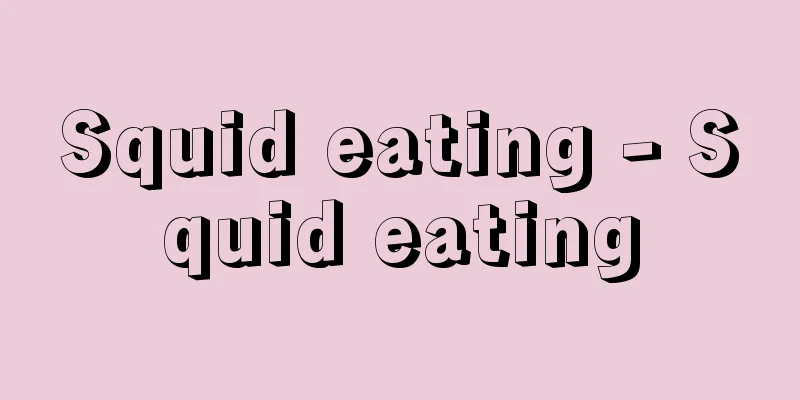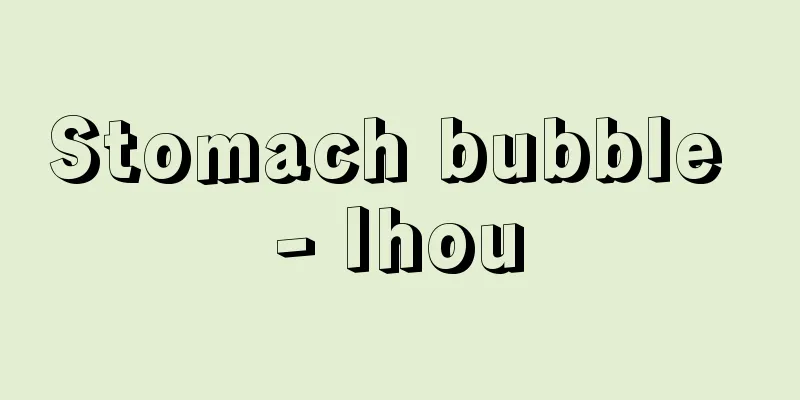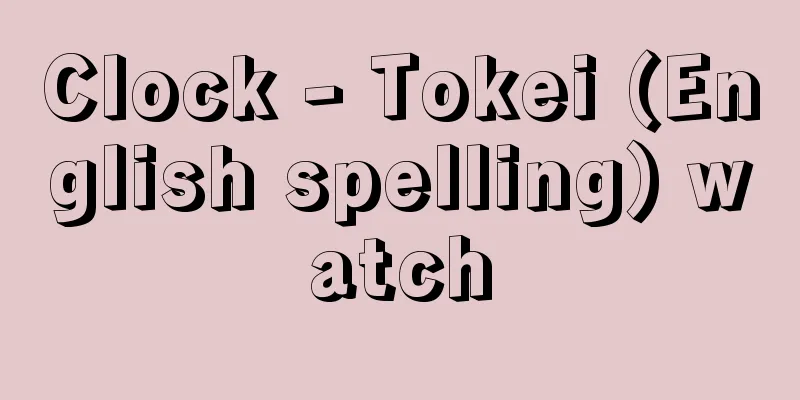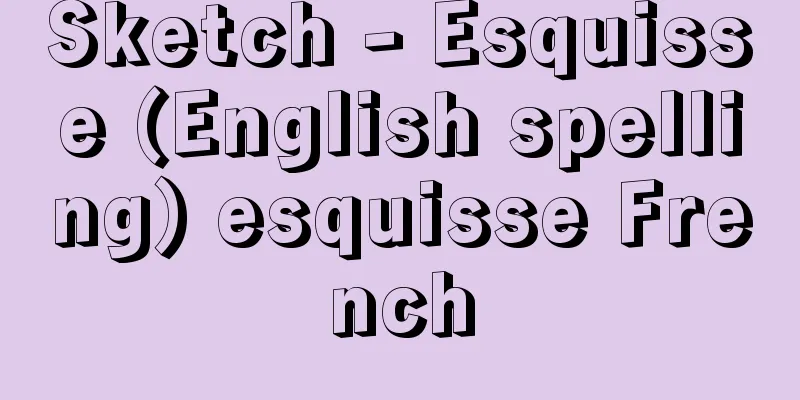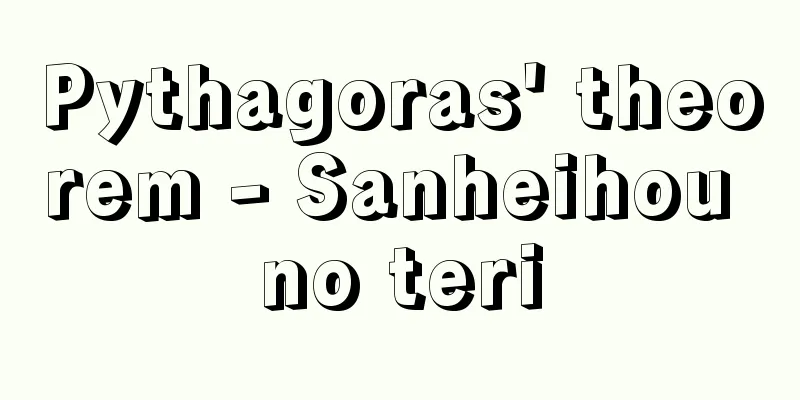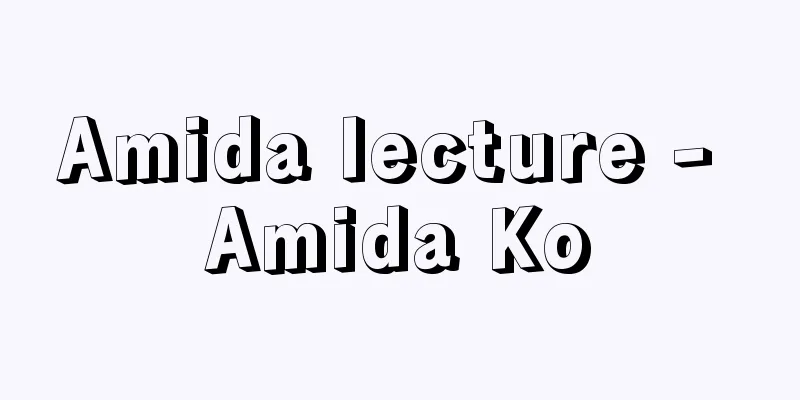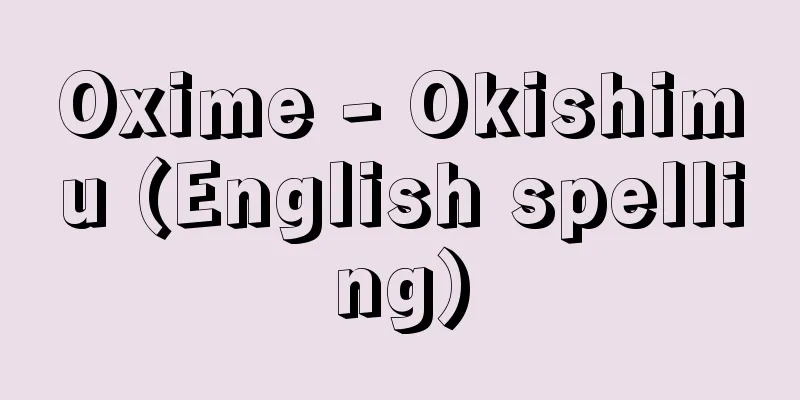Kana spelling - Kana usage

|
It means "how to use kana," but it has two main meanings. The first is the fact of how kana has actually been used, and the second is the standard for which of two or more ways of writing a word in kana should be considered correct. The first meaning refers to the phenomenon of "special kana usage in the ancient period" in the usage of Man'yo-gana used in the ancient period (Nara period), where the 13 kana characters of Eki-ke-ko-so-tono-hi-hemi-me-yo-ro were determined to be used in one of two categories, A and B, depending on the word, or the kana usage of hiragana around the end of the Heian period. The second meaning refers to "modern kana usage" that is generally used today, and "historical kana usage" (old kana usage) that was generally used in the past and is still used in classical Japanese today. The first meaning of kana spelling has existed throughout the ages since the time of ancient documents, but there are no clear examples of the second meaning in the Nara and Heian periods, and the first was the "Teika Kana Spelling" established by Fujiwara Teika in the Kamakura period. The oldest book that records it is said to be the "Gekanshu," and the "Kana Mojizukai" (Gyoa), which was widely used from the Middle Ages onwards, is thought to be an extension of that. Its contents are a collection of word examples with headings such as "o" and "wo," "he" and "e" and "we," "hi" and "wi" and "i," and under each heading are words that contain the kana. The standards are a kind of historical kana spelling, and are thought to have been based on documents from a little before Teika, probably around the 12th century. Among them, the initial "o" and "wo" were distinguished by the pitch of the accent, with the high syllable written as "wo" and the low syllable as "o", but this method had already been seen in Tachibana Tadakane's "Iroha Jiruisho" and the monk Juyo's "Daihannyakyo Ongi", so Teika probably adopted these precedents. Later, as the rules of waka and renga developed, kana spelling books such as "Hitomaru Hisho", "Gofukoen-in Misho", "Kana-tsukai Chikado", and "Ippo" appeared, but after the mid-Kamakura period, historical changes in accents occurred and words with changed accent patterns came into existence, causing confusion in the standards for writing "wo" and "o" mentioned above. During the Nanboku-cho period, Emperor Chokei criticized Teika's kana usage for not matching the accents, but his theory did not catch on. In the early modern period, around the Genroku period (1688-1704), the monk Keichu, while studying ancient documents, discovered that in documents from before the mid-Heian period, there was a distinction between the 47 letters of the Iroha alphabet, and that they were used in an orderly manner for all words. He considered this to be the standard for kana usage, and wrote the five-volume Waji Seiransho in 1693. This book is divided into categories such as "i," "wi," "hi," "wo," "o," "ho," "e," "we," and "he," and in each category, words are arranged in Iroha order, with the source of each word indicated. Next, in 1698, he wrote one volume of "Waji Seiran Yoraku," in which he excerpted words from "Seiransho" and provided detailed verification. In 1699, Tachibana Narikazu published "Waji Kokin Tsurei Zensho," but Keichu considered it to be a slander of "Waji Seiransho," and wrote five volumes of "Waji Seiran Tsusosho" to refute it in a fierce tone. Of these works by Keichu, "Tsusosho" has no evidence of having been widely distributed, but "Seiransho" has been reprinted many times, and "Yoraku" was not published but was circulated in the form of copies. And because its sources match the usage of kana in ancient documents, it spread mainly among those in the school of Japanese classics who aimed to study them. Later, Katori Nahiko rearranged the words into alphabetical order, supplemented them with examples from ancient texts such as the Shinsen Jikyo, and wrote the first volume of the Kogentei. This kana usage was used mainly by the school of Japanese classical scholars who studied ancient Japan, but it was not necessarily used by the general public, including Buddhist monks and Chinese scholars, and was not used by those in the waka school who preserved the ancient traditions. After the Meiji Restoration, as the education system spread to the general public and the printing culture of newspapers and magazines developed, this historical kana spelling was adopted as the standard for textbooks and printed materials, and spread rapidly throughout society. However, it was based on the 47 characters of "Iroha," which, from the perspective of the history of the Japanese language, was based on the pronunciation of the 10th century, and since then, the phonology of the Japanese language has changed significantly, and especially since the early modern period, there has been a large gap from the pronunciation, and writing the words of that time required memorizing each word one by one, which caused many inconveniences. In particular, with regard to the kana spelling of the sounds of Chinese characters, there were few examples of such writing in kana in the ancient documents that Keichu looked at, and although outlines were drawn up from the mid-Edo period onwards by the sound-sound researchers such as the monk Monno, Ota Zensai, Motoori Norinaga, Seki Masamichi and Shirai Hirokage, based on works such as Inkyo, many problems remained. In this climate, in 1897 (Meiji 30), a movement arose to change kana spelling to one based on modern sounds, and in 1900 (Meiji 33), the so-called "bobiki kana spelling" such as "oo" and "ko" was published in the "Enforcement Regulations for the Elementary School Act" and applied to textbooks, but it was heavily criticised, was abolished in 1908 and did not catch on widely in the public. In 1924 (Taisho 13), the Provisional National Language Investigation Committee announced a proposal for a revision of the Kana spelling system, but it was met with strong opposition. After that, the newly established National Language Investigation Committee announced the "New Character Onkana Syllabary Table" in 1942 (Showa 17), but this was not carried out due to wartime conditions. In the midst of the great social changes following the end of the Second World War, the Modern Kana Usage was established in 1946 (Showa 21). It was issued as a Cabinet Order along with the 1,850 "Tōyō Kanji" (General Kanji), but it quickly spread to the general public, including in school textbooks, newspapers and magazines. This was called the "New Kana Usage," and the traditional Kana Usage, known as the "Old Kana Usage," remained only in literary texts found in textbooks and among a small number of people, and even literary works from the Meiji period onwards were changed to the new method. The rules of the Modern Kana Usage are based on the previous "Old Kana Usage" and are revised accordingly. For example, the particles "wo," "wa," and " he " are allowed in their old forms, and "zu" and "ji," as in " mikazuki " (crescent moon) and "chijimu" (shrink) are retained when using rendaku or repeated pronunciation. They are not purely phonetic, but also contain transitional elements from the old method. There are also some inconsistencies in the structure of the rules, and there have been calls for their reexamination, including these. [Yutaka Tsukishima] "The History of Kana Usage" by Yamada Takao (1929, Hobunkan)" ▽ "The History of Kana Usage Research" by Kieda Masuichi (1933, Sanseisha)" ▽ "A Study of Characters and Kana Usage" by Hashimoto Shinkichi (1949, Iwanami Shoten)" ▽ "Kana Usage and Ancient Language" by Ohno Susumu (1982, Iwanami Shoten)" ▽ "New Writing of the Japanese Language" (1985), edited and published by Shogaku Tosho [Reference] | |©Shogakukan "> Kana spelling comparison table (1) ©Shogakukan "> Kana spelling comparison table (2) ©Shogakukan "> Kana spelling comparison table (3) ©Shogakukan "> Kana spelling comparison table (4) ©Shogakukan "> Kana spelling comparison table (5) Source: Shogakukan Encyclopedia Nipponica About Encyclopedia Nipponica Information | Legend |
|
「仮名の遣い方」の意であるが、大別して二つの用法がある。第一は、仮名が実際にどのように使用されてきたかという事実であり、第二は、ある語を仮名で書くにあたって、2通り以上の書き方が可能な場合に、そのうちのどれを正しいとすべきかという規範である。第一の意味としては、上代(奈良時代)に用いられた万葉仮名の用法のなかで、エキケコソトノヒヘミメヨロの13の仮名が、語によってそれぞれ、甲乙2類のうちのどちらかを用いるように定まっていたという「上代特殊仮名遣(づかい)」の現象とか、平安時代の末ごろの平仮名の仮名遣いとかいう場合がそれである。第二の意味としては、現在一般に通用している「現代かなづかい」や、現在も古文などに用いられ、以前は一般に使用されていた「歴史的仮名遣」(旧仮名遣い)などがそれである。 仮名遣いの第一の意味は、古く文献が発生したときから以後、各時代にわたって存在したが、第二の意味によるものは、奈良時代・平安時代にはその確かな例がみえず、鎌倉時代に入って、藤原定家(ていか)が定めたとされる「定家仮名遣い」がその最初とみられる。それを記した書のなかで最古のものとされるのは『下官(げかん)集』で、中世以後広く行われた『仮字(かな)文字遣』(行阿(ぎょうあ))は、それを増補したものと考えられる。その内容は、「お」と「を」、「へ」と「え」と「ゑ」、「ひ」と「ゐ」と「い」などの項目をたて、各項目の下にその仮名を含む語を示した語例集であるが、その規準は一種の歴史的仮名遣いであって、定家よりすこし前、おそらく12世紀ごろの文献を典拠にしたものと思われる。そのなかで、語頭の「お」と「を」とはアクセントの高低によって区別したもので、高い音節を「を」、低い音節を「お」と記したが、その方式はすでに橘忠兼(たちばなのただかね)の『色葉字類抄(いろはじるいしょう)』や、僧重誉の『大般若経音義(だいはんにゃきょうおんぎ)』などにもすでにみられるから、定家はそれらの前例を採用したのであろう。その後、和歌・連歌の規式の発達につれて、『人丸秘鈔(ひとまるひしょう)』『後普光園院御抄(ごふこうえんいんみしょう)』『仮名遣近道』『一歩』などの仮名遣い書が現れたが、鎌倉時代中期以後になると、アクセントの歴史的変化がおこり、アクセントの型が変わった語が生じたために、前述の「を」「お」の書き分けの規準が混乱してしまった。南北朝時代に、長慶(ちょうけい)天皇は、定家の仮名遣いがアクセントに符合しないことを批判したが、その説は一般に普及しなかった。近世に入り元禄(げんろく)(1688~1704)のころ、僧契沖(けいちゅう)は、上代の文献を研究している間に、平安中期以前の文献では、「いろは」47文字の区別があって、すべての語について整然と使い分けられていることを発見し、それこそが仮名遣いの規準であると考えて、元禄6年に『和字正濫鈔(しょうらんしょう)』5巻を著した。この書は、「い」「ゐ」「ひ」「を」「お」「ほ」「え」「ゑ」「へ」などの項目をたて、各項目ごとにいろは順に語を配列し、各語にその典拠を示したものである。ついで元禄11年『和字正濫要略』1巻を著し、「正濫鈔」のなかから語を抄出して詳しい考証を付した。元禄9年に橘成員(たちばななりかず)は『倭字(わじ)古今通例全書』を刊行したが、契沖はそれが『和字正濫鈔』を誹謗(ひぼう)したものと考え、『和字正濫通妨抄』5巻を著して激越な論調でこれを反駁(はんばく)した。これら契沖の著書のうち、「通妨抄」は流布した形跡がないが、「正濫鈔」は版を重ね、「要略」は刊行こそされなかったが写本によって流布した。そして、その典拠が古代文献の仮名の用法に合致しているため、それらの考究を目的とする国学の派の人々の間を中心に広まった。その後、楫取魚彦(かとりなひこ)は、掲語を五十音順に改編し、『新撰字鏡(しんせんじきょう)』など古代文献の用例を増補して『古言梯(こげんてい)』1巻を著した。この仮名遣いは、古代の日本を研究する国学者の流派を中心として行われたが、世間一般ではかならずしも使用されず、仏教の僧侶(そうりょ)や漢学者の間をはじめ、古来の伝統を守る和歌の流の人々などにも行われなかった。 明治維新以後、庶民一般にまで教育制度が普及し、また新聞雑誌などの印刷文化が発達するにつれて、教科書や印刷物などにこの歴史的仮名遣いが規準として採用され、世間全般に急速に広まった。しかし、それは「いろは」47文字を基準とするもので、国語史的にみれば、10世紀のころの発音によっており、その後、国語の音韻は大幅に変化したから、ことに近世以後になると、発音との隔たりが大きく、当時のことばを書くには、語ごとにいちいち記憶しなければならないなど、不便な点が多かった。ことに漢字の字音の仮名遣いについては、契沖が着目した古代文献のなかにその仮名書きの例が乏しいために、江戸時代中期以後、僧文雄(もんのう)、太田全斎、本居宣長(もとおりのりなが)、関政方(まさみち)、白井寛蔭(ひろかげ)などの字音研究によって、『韻鏡(いんきょう)』などを根拠にして大綱はつくられたものの、問題点が多く残されていた。このような風潮のなかで、1897年(明治30)になると、仮名遣いを現代語音によったものに改めようとする運動がおこり、1900年(明治33)「小学校令施行規則」によって、「おー」「こー」のようないわゆる「棒引仮名遣」が公布され、教科書にも適用されたが、批判が強く、08年には廃止され、世間にはあまり広まらなかった。24年(大正13)臨時国語調査会の仮名遣改定案が発表されたが、強い反対意見があった。その後、新たに設置された国語調査会は、42年(昭和17)「新字音仮名遣表」を発表したが、戦時下のため行われなかった。 第二次世界大戦終了後、社会の大変革のなかで、1946年(昭和21)「現代かなづかい」が成立した。これは「当用漢字」1850字とともに内閣訓令として公布されたものであったが、学校教科書、新聞雑誌をはじめとして世間一般に急速に広まった。これは「新仮名遣い」とよばれ、従来の仮名遣いは「旧仮名遣い」として、教科書などにみられる文語文や一部の人々の間だけに残るに至り、明治以後の文学作品などまで新方式に改められるようになった。「現代かなづかい」の規則は、従前の「旧仮名遣」を基にしてそれを改める形をとっており、助詞の「を」「は」「へ」を旧の形のままで認めたり、「みかづき」(三日月)や「ちぢむ」(縮む)のような「づ」「ぢ」などを連濁や連呼の際に残すなど、純粋に表音的ではなく、旧方式からの過渡的要素をも含んでいる。また、その規則の構成のなかで不整備の点があり、それらを含めて再検討の要望も生じてきている。 [築島 裕] 『山田孝雄著『仮名遣の歴史』(1929・宝文館)』▽『木枝増一著『仮名遣研究史』(1933・賛精社)』▽『橋本進吉著『文字及び仮名遣の研究』(1949・岩波書店)』▽『大野晋著『仮名遣と上代語』(1982・岩波書店)』▽『尚学図書編・刊『新しい国語の表記』(1985)』 [参照項目] | |©Shogakukan"> 仮名遣い対照表(1) ©Shogakukan"> 仮名遣い対照表(2) ©Shogakukan"> 仮名遣い対照表(3) ©Shogakukan"> 仮名遣い対照表(4) ©Shogakukan"> 仮名遣い対照表(5) 出典 小学館 日本大百科全書(ニッポニカ)日本大百科全書(ニッポニカ)について 情報 | 凡例 |
<<: Temporary character Okunoyamamichi - Kana spelling Okunoyamamichi
Recommend
white magic
…Originally, it was a type of magic practiced amo...
You stand - You stand
…Also called maedachi, it is a Buddhist statue th...
Cornus kousa - Mountain flower
A deciduous tree of the Cornaceae family (APG cla...
Commissioner of the Righteous Army
Taking advantage of the internal conflicts among ...
Exchange rate policy
In a broad sense, it can be interpreted as includi...
National Institute for Japanese Language and Linguistics
A research institute that constitutes the Nationa...
Okudaira Ietsuna - Okudaira Ietsuna
...A fudai daimyo in the early Edo period. The fi...
Bronchogenic pulmonary suppuration - pulmonary suppuration
… [Types and causes of lung abscess] Depending on...
Energy elements
...However, H. Rubens and others pointed out that...
Hojo Tokimasa
Year of death: Kenpo 3.1.6 (1215.2.6) Year of birt...
Oshakujima Island
...There is a regular ferry service from Sakata P...
Kornemann, E.
...They are broadly divided into internal causes ...
Open sandwich
Open sandwich: an open-faced sandwich made by plac...
time
...Time is something that is maintained in all ch...
Shareholders' allotment - Kabunushiwariate
Along with public offerings and third-party allotm...
